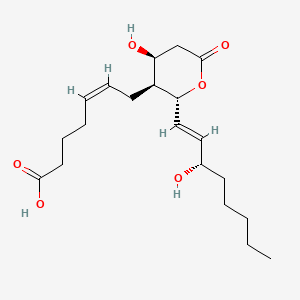| MeSH term | MeSH ID | Detail |
|---|---|---|
| Diabetes Mellitus | D003920 | 90 associated lipids |
| Inflammation | D007249 | 119 associated lipids |
| Diabetes Mellitus, Type 1 | D003922 | 56 associated lipids |
| Diabetes Mellitus, Type 2 | D003924 | 87 associated lipids |
| Asthma | D001249 | 52 associated lipids |
| Cardiovascular Diseases | D002318 | 24 associated lipids |
| Hypercholesterolemia | D006937 | 91 associated lipids |
| Thrombosis | D013927 | 49 associated lipids |
| Cerebral Hemorrhage | D002543 | 13 associated lipids |
| Brain Ischemia | D002545 | 89 associated lipids |
| Cerebrovascular Disorders | D002561 | 25 associated lipids |
| Polycythemia Vera | D011087 | 13 associated lipids |
| Hyperlipidemias | D006949 | 73 associated lipids |
| Blood Platelet Disorders | D001791 | 12 associated lipids |
| Albuminuria | D000419 | 18 associated lipids |
| Renal Artery Obstruction | D012078 | 8 associated lipids |
| Atrial Fibrillation | D001281 | 16 associated lipids |
| Atherosclerosis | D050197 | 85 associated lipids |
| Death, Sudden, Cardiac | D016757 | 12 associated lipids |
| Hypoalphalipoproteinemias | D052456 | 5 associated lipids |
11-dehydro-TXB2
11-dehydro-txb2 is a lipid of Fatty Acyls (FA) class. 11-dehydro-txb2 is associated with abnormalities such as endothelial dysfunction, Risk factor, cardiovascular, Acute coronary syndrome, thrombocytosis and Chronic ischemic heart disease NOS. The involved functions are known as Platelet Activation, Excretory function, Anabolism, Inflammation and Lipid Peroxidation. The associated genes with 11-dehydro-TXB2 are PTGS2 gene.
Cross Reference
Introduction
To understand associated biological information of 11-dehydro-TXB2, we collected biological information of abnormalities, associated pathways, cellular/molecular locations, biological functions, related genes/proteins, lipids and common seen animal/experimental models with organized paragraphs from literatures.
What diseases are associated with 11-dehydro-TXB2?
11-dehydro-TXB2 is suspected in endothelial dysfunction, Risk factor, cardiovascular, Acute coronary syndrome, thrombocytosis, Chronic ischemic heart disease NOS, Diabetes Mellitus and other diseases in descending order of the highest number of associated sentences.
Related references are mostly published in these journals:
| Disease | Cross reference | Weighted score | Related literature |
|---|
Possible diseases from mapped MeSH terms on references
We collected disease MeSH terms mapped to the references associated with 11-dehydro-TXB2
PubChem Associated disorders and diseases
What pathways are associated with 11-dehydro-TXB2
There are no associated biomedical information in the current reference collection.
PubChem Biomolecular Interactions and Pathways
Link to PubChem Biomolecular Interactions and PathwaysWhat cellular locations are associated with 11-dehydro-TXB2?
There are no associated biomedical information in the current reference collection.
What functions are associated with 11-dehydro-TXB2?
Related references are published most in these journals:
| Function | Cross reference | Weighted score | Related literatures |
|---|
What lipids are associated with 11-dehydro-TXB2?
There are no associated biomedical information in the current reference collection.
What genes are associated with 11-dehydro-TXB2?
Related references are published most in these journals:
| Gene | Cross reference | Weighted score | Related literatures |
|---|
What common seen animal models are associated with 11-dehydro-TXB2?
There are no associated biomedical information in the current reference collection.
NCBI Entrez Crosslinks
All references with 11-dehydro-TXB2
Download all related citations| Authors | Title | Published | Journal | PubMed Link |
|---|---|---|---|---|
| Ikonomidis I et al. | Cigarette smoking is associated with increased circulating proinflammatory and procoagulant markers in patients with chronic coronary artery disease: effects of aspirin treatment. | 2005 | Am. Heart J. | pmid:15894964 |
| Coppola A et al. | Reduced in vivo oxidative stress following 5-methyltetrahydrofolate supplementation in patients with early-onset thrombosis and 677TT methylenetetrahydrofolate reductase genotype. | 2005 | Br. J. Haematol. | pmid:16173969 |
| Haubelt H et al. | Can platelet function tests predict the clinical efficacy of aspirin? | 2005 | Semin. Thromb. Hemost. | pmid:16149017 |
| Davì G et al. | Helicobacter pylori infection causes persistent platelet activation in vivo through enhanced lipid peroxidation. | 2005 | Arterioscler. Thromb. Vasc. Biol. | pmid:15472127 |
| Kataoka M et al. | A long-acting prostacyclin agonist with thromboxane inhibitory activity for pulmonary hypertension. | 2005 | Am. J. Respir. Crit. Care Med. | pmid:16192456 |
| Saloheimo P et al. | Thromboxane and prostacyclin biosynthesis in patients with acute spontaneous intracerebral hemorrhage. | 2005 | Thromb. Res. | pmid:15733969 |
| De Candia E et al. | Abnormal pH-sensing of platelet Na+/H+ exchanger in patients with cardiac syndrome X. | 2005 | Int. J. Cardiol. | pmid:15837078 |
| Sciulli MG et al. | Platelet activation in patients with colorectal cancer. | 2005 | Prostaglandins Leukot. Essent. Fatty Acids | pmid:15626589 |
| Gonzalez-Conejero R et al. | Biological assessment of aspirin efficacy on healthy individuals: heterogeneous response or aspirin failure? | 2005 | Stroke | pmid:15604423 |
| Capone ML et al. | Clinical pharmacology of platelet, monocyte, and vascular cyclooxygenase inhibition by naproxen and low-dose aspirin in healthy subjects. | 2004 | Circulation | pmid:15037526 |
